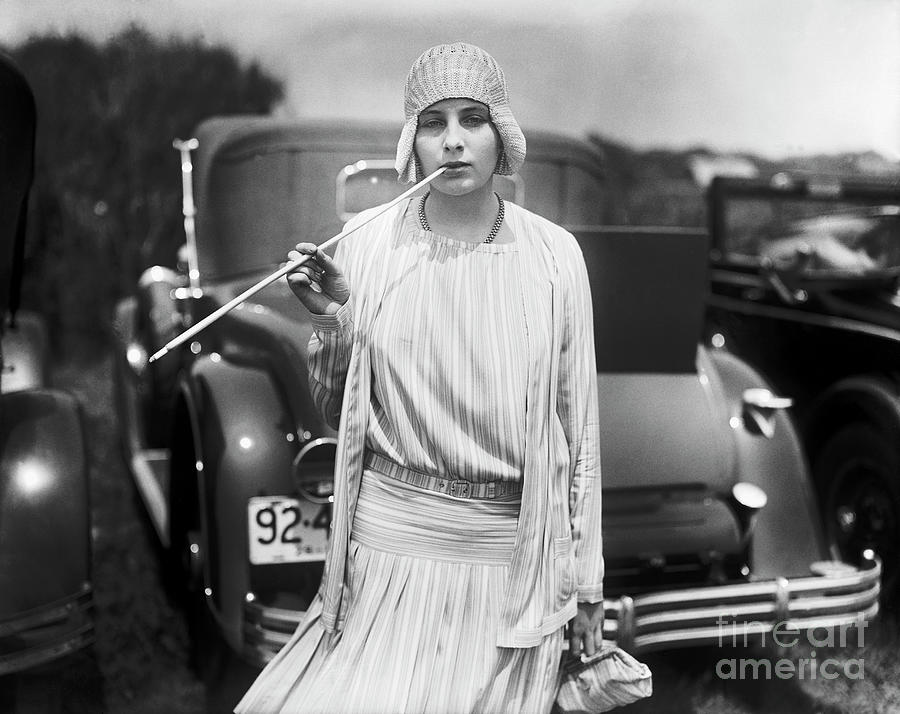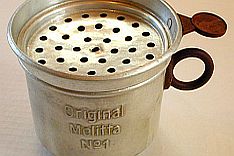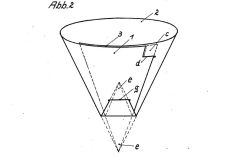Writing Journal: Object Culture
ENG170 Writing Journal Schedule
A Patched Relationship
When I was a kid, I collected patches of anywhere I had been as a sort of memento of the time I had there. This was an idea started by my stepdad, Greg. Greg is a sheet-metal worker and has a collection of his own. Greg collects stickers and puts it on a big thing of sheet metal. Every other year me, my mom, and Greg would go camping with his family upstate at a place called Fish Creek. This particular year, we had drove up a Whiteface Mountain and arrived at the gift shop. I wanted something to remember this occasion with, but I couldn’t think of anything. This is when my stepdad chimes in with his idea of patches. So that’s what I did. I picked up as many patches I could from Fish Creek that year and when we got home Greg and I went to a store and bought a backpack to put all the patches on. Whenever we went on a vacation or even to a new place Greg and I would always rush to a gift store and look for patches to add to our collection. This patch collection was so important to us that when Greg married my mom and they went on their honeymoon, Greg got me a patch for each place they visited. This collection was also helped out by my grandpa who had tones of patches from his time in the air force. My patch collection continues to this day and whenever I go out, whether that be into town or on a day trip, I always make it my mission to search for new patches I can show Greg when I get home from school. To this day I compare my patch collection to his sticker collection. Unfortunately, I haven’t been able to put new patches on my backpack since I’ve been away from home. It is very interesting how something as simple and insignificant as a patch has the power to bring people together to create and strengthen relationships.

To Sign or be Signed
Paul Schmelzer is a writer and editor based in Minneapolis. Paul has a seemingly normal life aside from his bizarre collection of celebrity signatures. While this doesn’t seem too bizarre on the surface, but when talking a closer look, you can see that all the signatures are in his name, rather than the celebrities. Schmelzer has collected over 70 autographs from different celebrities signing his name. The reason this started was because of a younger family friend of Schmelzer’s. The family friend met a famous musician and asked for an autograph. Upon receiving the autograph, the friend demanded the musician to write his name and not the musicians. Whenever Schmelzer meets a new celebrity at concerts, art galleries, etc. he always asks for an autograph of his name. He even mails celebrities letters asking for them to send back his signature. Schmelzer has signatures ranging from Yoko Ono to the voice of Homer Simpson, Dan Castellaneta. This collection is important because it critiques the idea of celebrity autographs being profitable while also being a celebration of the impact of that celebrity.
Source: www.macalester.edu/gallery/pastexhibits/2016-17/paul-schmelzer-signifier-signed/

Pocketing Hot Pockets
This has made me think about some objects that I could start collecting. Like Schmelzer, I want them to have meaning; I want the collection to reflect something I need to change in my daily life. For instance, I could collect receipts to show that I need to cut down on spending, or I could collect candy wrappers to show my unhealthy eating habits and encourage myself to eat healthier or maybe even work out. The items should also be relatively easy to store. I don’t want to have to find a big space for every package I get. I’ve decided that I will probably start collecting the finished boxes of Hot Pockets me and my roommate eat. We can go through six boxes in five days and each box contains two hot pockets. This is something I can collect easily, and it is inexpensive. Furthermore, I can use it as a visual representation of how much Hot Pockets I eat and see how unhealthy it is.
Japan’s Three Sacred Treasures
In Shinto, the historic state religion of Japan, there are three sacred treasures, also know as the imperial regalia of Japan. The three sacred treasures consist of the Kusanagi, a sword, the Yata no Kagami, a mirror, and the Yasakani no Magatama, which was a jewel. These objects each represent a virtue; the sword represents valor, the mirror represents wisdom, and the magatama represents benevolence. Each object resides within a temple or shrine in Japan and cannot be seen by the public and the original Kusanagi and Yata no Kagami are replicas. The Yasakani no Magatama, however, is believed to be the real. A magatama is used as a talisman of good fortune in Japan and many were common during Japan’s Jōmon, Yayoi, and Kofun Periods (13,000 BC – 650 AD) but still see some popularity to this day, being sold at retail stores. A magatama talisman would be worn or decorated at burial sites to provide good fortune to the ones wearing it or avoid evil spirits. Although prototypes of the magatama were seen in Japan’s Jōmon period (13,000 BC – 300 BC) it was formally introduced to them from Korea around the third and fourth centuries AD. The magatama is a small, comma-shaped symbol commonly made from precious gems (like Jade) or brightly colored stones and while it is uncertain exactly what the magatama is supposed to look like, some theories believe that it represents an animal tusk, a woman’s womb, and even a part of the Taoist’s Yin-Yang symbol.
Sources:
https://www.onmarkproductions.com/html/magatama.html
https://www.onmarkproductions.com/html/shrine-guide-2.shtml#regalia
Gnome Place Like Gnome
It’s a hot summer day. The birds are chirping and the sun is beating as I visit my grandmothers for the summer. In her garden, there are little men with red hats observing me from afar while I greet her and enter her house. Garden gnomes are loved by many grandmas and garden owners alike. The garden gnome has its origins going as far back as ancient Rome. In ancient Rome, these statues weren’t gnomes but rather little clay statues of Roman gods, usually Priapus who was the god of fertility. These statues were believed to ensure a bountiful harvest and to keep evil spirits away. Gnomes persisted into the Renaissance era where their stories were expanded upon. During the Renaissance, gnomes were described as being mystical creatures, invisible to humans, with magical powers that would help plants grow at night. They were commonly drawn very small and with hunched backs which earned them the title of “Gobbi” in Italian, which means hunchbacks. In the 18th century gnomes became a status symbol, only being affordable to wealthy families. Garden gnomes were able to persist because of their folklore and mythology that included into many German fairy tales. Garden gnomes gained their kitsch status after the world wars when the production of garden gnomes understandably declined, and they were introduced in the 1970’s and 1980’s when foreign companies produced cheap imitation of German garden gnomes and captured the hearts of garden owners. Garden gnomes are still seen in the modern day but are now made of ceramic instead of clay. Garden gnomes are often depicted with a red hat, a blue tunic, and oversized belts. Sometimes they are even portrayed with mushrooms as well as different types of foliage. Garden gnomes have even made it into media with movies such as, Gnomeo and Juliet, Amélie, and Sherlock Gnomes.


Sources:
https://www.trees.com/gardening-and-landscaping/history-of-garden-gnomes
Holy Trinity Turned Drinking Festivity
March 17th, Saint Patrick’s Day. Many objects are associated with this holiday such as booze, parades, and the color green. However, the most iconic object related to, not just Saint Patrick’s Day but to Ireland as a whole, is the shamrock. Shamrocks are three-leafed clovers that are typically green but can occasionally be seen in purple or white. Shamrocks are not to be confused with four-leafed clovers which are only green and only have four leaves, as the name suggests. Shamrocks are considered to be the unofficial flower of Ireland. This came to be when a 16-year-old boy from Roman Britain was kidnapped by pirates and brought to Ireland as a slave during the fifth century AD. The young boy was named Maewyn Succat and while in captivity he converted to Christianity and upon his escape went back to Britain and France and became a missionary. Upon becoming a priest Succat changed his name to Patricius AKA Patrick. Patrick returned to Ireland hoping to convert the Irish (who were pagan at that time) to Christianity. Patrick used the shamrock as a metaphor to help explain the Holy Trinity to the pagan Irish. After Patrick the number of Irish converted to Christianity was immense. The shamrock being used as a metaphor stuck with Irish culture and remains to this day. The shamrock can be seen in company logos like Aer Lingus (Ireland’s airline) or as promotional items with McDonald’s famous Shamrock Shake.


Sources:
https://www.history.com/topics/st-patricks-day/who-was-saint-patrick
https://time.com/5550579/shamrock-history/
https://www.europeana.eu/en/blog/why-the-shamrock-is-a-symbol-of-ireland
America’s Greasy History
A tight t-shirt, black leather jacket, baggy denim jeans, black motorcycle boots and of course the slicked back “greasy” hair. This is the common fashion worn by a greaser back in the 1950’s. However, the term “greaser” didn’t start off describing rebellious teens but rather it was a derogatory term against Mexicans. This term came about in the mid to late 1800’s and was given to Mexicans that would grease carts. This was seen as one of the worst jobs you could have so it was used in a disrespectful manner. The term greaser was used in the “Greaser Act” in California during the 1950’s where it was then picked up by the subculture on the east coast. The greaser subculture started in working-class communities on the east coast and commonly referred to Italian Americans and Mexican Americans. Many of these workers were in mechanics shops or dealt with automobiles, where they would have as much grease on their face as they did in their hair. As mentioned before, greasers typically had a tight t-shirt and jacket on their body. This jacket could differ from denim jackets to high school Letterman jackets. They would typically wear denim pants or work pants accompanied by boots. Their hair was always greased up into many different hairstyles using pomade, wax, or gel. These included but are not limited to: the Pompadour, the Folsom, and the Elephant’s Trunk. Greasers were much more than their outfits. They often had rebellious attitudes and kept a “bad boy” persona. Greasers would often be a part of a gang or posse that they would hang around or loiter with. Although greasers were predominantly male it wasn’t uncommon to see a female greaser every so often, sporting similar fashion to their male counterpart. Greaser culture became most popular due to its representation in pop culture and the media. Examples of this that contributed to the popularity of the greaser during the 1950’s are Marlon Brando’s portrayal of Johnny Strabler in The Wild Ones and James Dean’s representation of Jim Stark in Rebel Without a Cause. In Dean’s case it led to him being the icon of greaser culture. In the modern day there are plenty of references to greasers such as Happy Days, Grease, The Outsiders, The Wanderers, Cry-Baby, and Blackboard just to name a few.


https://thegreasersubculture.weebly.com/background-information.html
Advertising Cigarettes to Suffragettes
Sometime after working with President Wilson to provide support for the United States war effort during World War I Edward Bernays was called up by the president of the American Tobacco Corporation, George Hill, to break the stigma behind women not being able to smoke. Bernays got the help of a psychoanalyst who deduced that cigarettes symbolized male sexuality and the penis. Bernays worked with this information by making cigarettes become a feminist symbol for women. If women were doing something that was only for men it would show the power of women. In order to do this Bernays set up an event during the Easter Day parade in New York where got upper class women to hide cigarettes on them and when he gave the signal they would all take out a cigarette and smoke. Bernays made this a feminist movement by stating to the press that this was started by suffragettes as a sign of protest and even came up with a phrase for this protest: cigarettes would become “torches of freedom”. This phrase refers back to the statue of liberty. This greatly impacted American consumer culture. Smoking is no longer seen as a man’s activity; anybody can do it. By making the sale of cigarettes about social justice Bernays was able to break a cultural stigma forever. Bernays created an advertisement that focused on pathos to sell the product rather than actually advocating for the product. This tactic is still utilized to this day. One of the most popular examples being the drug industry. Many advertisements about medicine often depict an individual having fun, spending time with family and friends, being outside, or other fun activities. Meanwhile, the narrator lists off symptoms of the medicine that aren’t depicted in the advertisement. I think Bernays had a negative impact on our culture. Bernays created a culture where people listen to their hearts rather than with their ears. The reason I see this as a negative is because it has had negative impacts on things outside of advertisement, such as politics. For some people, elections have become a popularity contest rather than a debate on policy. People could name all the good and bad things about a candidate’s personal life but when you ask them a question about their public, foreign, or economic policy they can’t give a suitable answer.


Source: https://watchdocumentaries.com/the-century-of-the-self/
The United States Liquid Gold
Oil drilling has become one of the most profitable industries in the world but also one of the most hazardous. In 2022, the global oil and gas industry to $4 trillion. One of the biggest threats to the environment is oil spills. Smithsonian Education states that “more than 60 million gallons of oil enter the oceans every year” (Smithsonian). Oil spills can occur when pipelines break, oil tankers ships sink, or drilling. Oil spills can cause fouling or oiling which is when oil physically harms plants or animals. For example, oil can coat the wings of a bird making it unable to fly or the gasoline can be toxic and kill the animal or plant with just a touch. Oil spills influence humans as well. The toxic compounds in oil “can cause severe health problems like heart damage, stunted growth, immune system effects, and even death” (noaa.gov). Organizations like the National Oceanic and Atmospheric Administration help with restoration projects that help different habitats and species recover from oil spills. There have been three major oil spills that stand out. One was in 1969 when there was a blowout on an offshore platform off the coast of California and spilled four million gallons of oil into the ocean. Another was in 1989, when an Exxon Valdez oil tanker that sunk in the Prince William Sound in Alaska spilled over 11 million gallons of oil. Finally, the last big oil spill was the Deepwater Horizon oil spill. On April 20, 2010, there was an explosion on the Deepwater Horizon drilling platform in the Gulf of Mexico, killing 11 people. The Deepwater Horizon oil spill left approximately 134 million gallons of oil in the ocean. Although the Deepwater Horizon incident was over ten years ago, the restoration process continues to this day.

https://www.noaa.gov/education/resource-collections/ocean-coasts/oil-spills
Filter Fiasco
When one thinks of coffee, think of its bitter taste, the beans that go into it, or maybe even the smell. What most people don’t think about is what goes into making coffee. One of the most crucial parts of the coffee making process is an unexpected one: the filter. Before 1908, coffee was made by pouring coffee powder into hot water and waiting for the powder to settle or using a sieve to sift the powder. This, however, rarely resulted in a clean cup of coffee since the sieve’s holes were too small for the coffee powder or the holes were too big, and the mixture floated back into the cup. This left the coffee lukewarm and with a gross aftertaste. Melitta Bentz sought to remedy this. She experimented using a perforated brass cup and using blotting paper from one of her son’s exercise books to use as a filter. Bentz registered her model at the Kaiserliches Patentamt (the Imperial Patent Office) in Berlin, 1908. This made Bentz the first women in Germany to have a patent for her own personal invention. The coffee filter would change how people drank coffee forever. However, this was only the beginning for Bentz. Bentz success would jumpstart her career and she would go on to start her own company named Melitta. Melitta is a company that remains to this day and sells and distributes coffee-related products. Today, Melitta USA makes $82 million a year.


Pocketing Hot Pockets: Revisited
About 12 weeks ago I started my collection of empty Hot Pocket boxes to document how much me and my roommate consume and the unhealthy lifestyle we’ve been living while in college. First, the reason me and my roommate eat Hot Pockets to begin with is because they are a quick, easy, and fulfilling meal when the dining hall is closed or as a late night snack. However, Hot Pockets comprise of processed cheese and meat, which means it is far from being a nutritious and healthy meal. Hot Pockets are cheap, usually costing around $3.50 a box and each box contains two Hot Pockets. Over the 12 weeks in which I collected each box, me and my roommate collected 33 boxes of Hot Pockets or about 66 Hot Pockets eaten. This means that, on average, we ate 2.75 Hot Pockets a day. Each box contains 540 calories, which means that, in those 12 weeks, 35,640 calories were from Hot Pockets alone. This experiment was an eye-opener for me and my roommate because we had no idea just how much hot pockets we actually ate. Going forward, me and my roommate will be more conscious of the foods we eat as we are both trying to get in shape.

